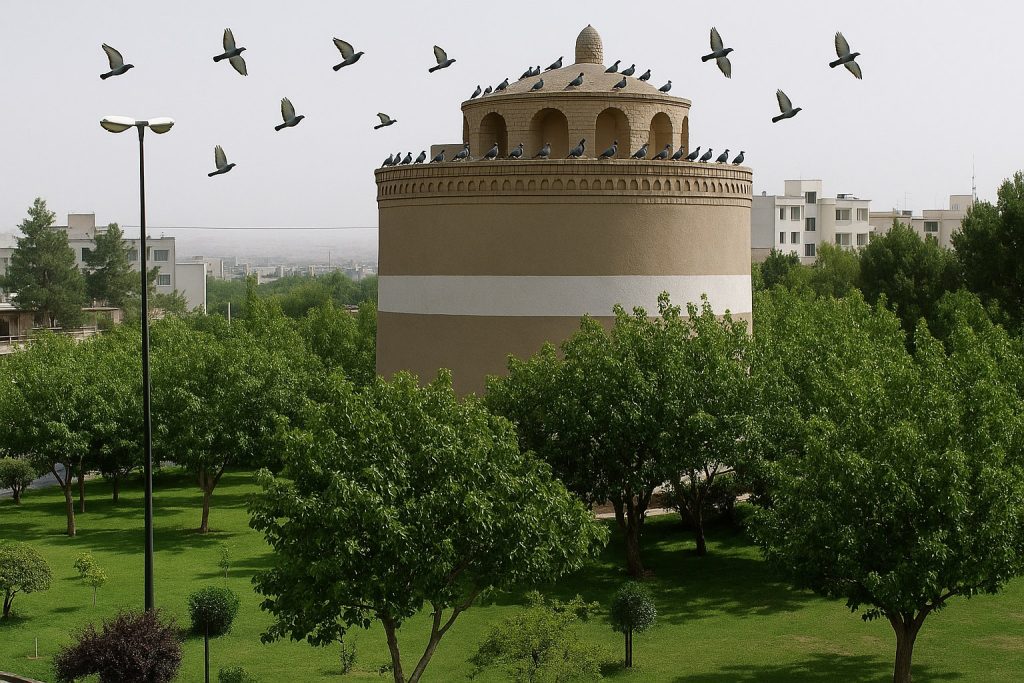
Humans – Nature – Animals: Living Together in Harmony
In this image, we see a traditional dovecote tower nestled within an urban green space, surrounded by trees and modern apartment buildings. This scene beautifully represents the coexistence of humans, nature, and animals—a concept deeply rooted in the architectural and cultural heritage of the city of Isfahan.
Not long ago, architecture was not only designed for human habitation but also took into account the ecosystems of animals and harmony with the natural environment. A brilliant example of this thoughtful approach is the dovecote towers of Isfahan. These structures were not merely shelters for thousands of pigeons; they were carefully designed using local materials and forms to provide safe nesting places for birds while collecting their droppings as valuable fertilizer for agriculture—a meeting point of wisdom, nature, and respect for life.
Today, amidst lush trees and modern urban structures, these towers remain as a reminder of the ancient connection between humans and the natural world. The sight of pigeons flying in the sky and resting peacefully on the towers is a symbol of the safety and serenity that traditional architecture offered to all living beings.
Perhaps it is time for contemporary urban design to draw inspiration from such traditions—creating spaces that not only serve human needs but also consider the presence and wellbeing of other creatures. Coexistence, not competition, is the key to building a sustainable future for our cities.
Bridging Time: Reviving Worn Urban Fabrics Through an Architectural Lens
In my architectural philosophy, deteriorated urban fabrics are not merely physical areas in need of renovation—they are silent guardians of history, culture, and urban identity. Every cracked wall, weathered wooden window, and narrow alleyway carries stories from the past that, if observed with care, can illuminate the path to the future.
Reviving old neighborhoods, to me, is not just a physical reconstruction—it’s a conscious process of preserving the soul of a place while transforming it into a functional and vibrant space for contemporary life. Instead of wholesale demolition and replacement with generic, characterless buildings, we must understand the past, draw inspiration from it, and integrate it thoughtfully with today’s needs.
This approach not only strengthens cultural memory and enhances the sense of belonging, but also contributes to the environmental and social sustainability of our cities. Using local materials, familiar forms, and reinterpreting functions within historical frameworks becomes a powerful way to bridge tradition with innovation.
In my view, sustainable architecture is not about burying the past—it’s about rereading it. Our cities, scarred by time and neglect, are not lost—they’re waiting to be reawakened with respect. Architecture can—and should—be the bridge that connects authenticity with the future.